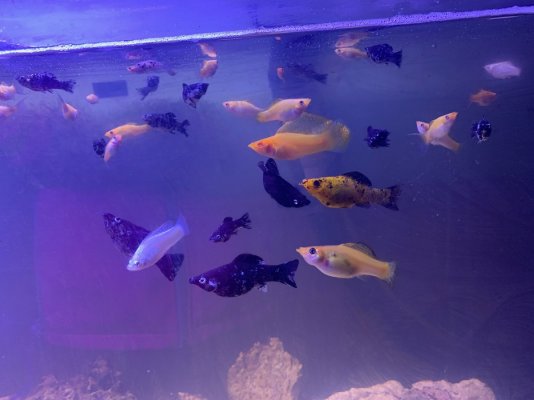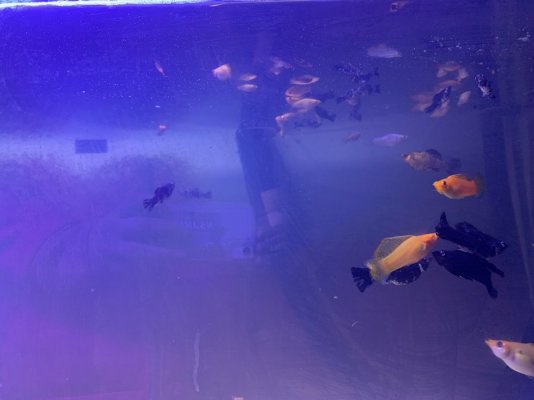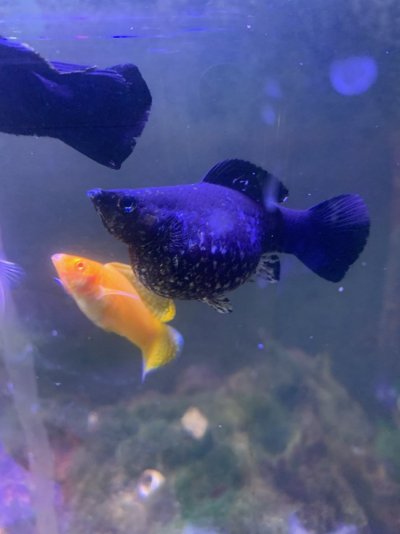My tank is pretty crappy compared to others on this site I'm not doing alot right haha. That may be the trick right there I have brown algae red algae and green filamentous algae all in my display which looks horrible but the mollys graze that algae 24/7. My sump has a large rock crab that eats the babies in there and theres still more than I can count in there. I didn't realize they eat babies because ive never witnessed this. Honestly I thought them overpopulating a tank is normal.as attiland said they can eat their own babies.It's not something uncommon.I had FW about 6-7 years ago and both guppies and mollys(and the rest livebearers) ate their babies in the tank.I don't know how your tank is overcrowded with babies but these babies even if they don't get eaten they need special food.There are many factors that makes them not get full grown.Maybe you are just lucky i don't know,what i believe is that it's not possible that the babies can survive on their own in the main display.Again this is what i believe.If you say that your babies survive i believe you and perhaps you just doing something correct idk.



Last edited:


















